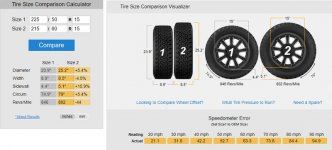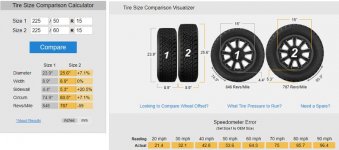BajaRon
Well-known member
I know. A very overworked subject. My hope is that by taking some of the confusion out of the equation. Everyone will have a better understanding of what they should be looking for and not have to rely on someone else's opinion.
The Spyder and Ryker machines are special animals in may ways. This is very true when talking about tires. I hope this is a help.
The following only applies if we have gotten past the ever present Car Tire vs. Motorcycle Tire discussion.
There are 4 basic tire tread designs.
Symmetric is just another way of saying 'The Same'. This tread pattern is the most common. This tread may be the same all the way across. Or, looking from the center of the tread, each half is a mirror image of the other.. This allows tire rotation in either direction and does not require dismount/remount if you move from one side of the vehicle to the other. These are NOT 'Directional'.
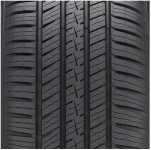
Though these may not be ideal for the Spyder/Ryker. They will work on both the front and rear of these bikes and can be mounted to run in either direction.
Asymmetric is just another way of saying, 'Not The Same'. Where the tread pattern changes across the face of the tire. There are many reasons for this but one of the main ones is to give a stiffer construction to the outside of the tire (which takes the most abuse in turns) to increase cornering stability. This design also allows for tire rotation without dismount, remount as they are not 'Directional'. These can also be run in either direction. But they must be mounted so that the side designed to be on the outside is correctly oriented.
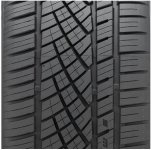
Asymmetric tires can work well on the front of the Spyder/Ryker. But not on the rear. When mounted on a single rear wheel. The back of the bike will corner better in one direction than it will in the other. This is not a good idea for a Spyder/Ryker rear tire.
Directional or Unidirectional tread is designed to roll in only one direction. It will be a mirror image as looking from the center of the tread. Usually incorporating a distinct 'V' pattern. This design is engineered to enhance hydroplaning resistance by moving water away from the tire more efficiently than most other tread designs. These must be dismounted/remounted on the wheel if you want to rotate them to the other side of the vehicle. Like the Asymmetric tire. These must be mounted for correct orientation.
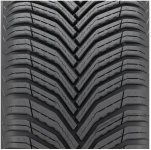
Generally speaking. This design gives the best traction in wet and standing water situations. Though there are a few non-directional tires which will also give excellent wet traction.
Tires which are both Asymmetric and Directional generally will incorporate some form of the 'V' pattern above. But it is offset to one side of the tire tread. These are typically special application tires. I don't know of any that will fit the Spyder or Ryker stock wheels so I did not include a picture.
General 'Rules of Thumb'
Typically, you will trade improved traction (especially wet traction) for a higher mileage tire. A long lasting tire has to use a harder compound which will not grip the roadway as well.
I do not recommend 'Summer' tires in any format for the Spyder/Ryker. Unless you are only going to be riding when pavement is 70 degrees or above. Once the pavement begins to cool, (especially as these summer tires begin to wear) they tend to get slick. It is not so dramatic in a car because of the additional weight. With the relatively light Spyder (especially in the rear) the difference can be pretty dramatic.
If you ride when the pavement is 40 degrees or less, Summer Tires can be very slick, no matter how good or dry the pavement is. This tire compound is specifically designed to give extremely good traction with warm or hot pavement. They are a 1 trick pony. For most of us, we need a good 'All Season' tire.
At the very least. If you're running a 'Summer' tire. Be aware of these tendencies.
The Spyder and Ryker machines are special animals in may ways. This is very true when talking about tires. I hope this is a help.
The following only applies if we have gotten past the ever present Car Tire vs. Motorcycle Tire discussion.
There are 4 basic tire tread designs.
Symmetric is just another way of saying 'The Same'. This tread pattern is the most common. This tread may be the same all the way across. Or, looking from the center of the tread, each half is a mirror image of the other.. This allows tire rotation in either direction and does not require dismount/remount if you move from one side of the vehicle to the other. These are NOT 'Directional'.

Though these may not be ideal for the Spyder/Ryker. They will work on both the front and rear of these bikes and can be mounted to run in either direction.
Asymmetric is just another way of saying, 'Not The Same'. Where the tread pattern changes across the face of the tire. There are many reasons for this but one of the main ones is to give a stiffer construction to the outside of the tire (which takes the most abuse in turns) to increase cornering stability. This design also allows for tire rotation without dismount, remount as they are not 'Directional'. These can also be run in either direction. But they must be mounted so that the side designed to be on the outside is correctly oriented.

Asymmetric tires can work well on the front of the Spyder/Ryker. But not on the rear. When mounted on a single rear wheel. The back of the bike will corner better in one direction than it will in the other. This is not a good idea for a Spyder/Ryker rear tire.
Directional or Unidirectional tread is designed to roll in only one direction. It will be a mirror image as looking from the center of the tread. Usually incorporating a distinct 'V' pattern. This design is engineered to enhance hydroplaning resistance by moving water away from the tire more efficiently than most other tread designs. These must be dismounted/remounted on the wheel if you want to rotate them to the other side of the vehicle. Like the Asymmetric tire. These must be mounted for correct orientation.

Generally speaking. This design gives the best traction in wet and standing water situations. Though there are a few non-directional tires which will also give excellent wet traction.
Tires which are both Asymmetric and Directional generally will incorporate some form of the 'V' pattern above. But it is offset to one side of the tire tread. These are typically special application tires. I don't know of any that will fit the Spyder or Ryker stock wheels so I did not include a picture.
General 'Rules of Thumb'
Typically, you will trade improved traction (especially wet traction) for a higher mileage tire. A long lasting tire has to use a harder compound which will not grip the roadway as well.
I do not recommend 'Summer' tires in any format for the Spyder/Ryker. Unless you are only going to be riding when pavement is 70 degrees or above. Once the pavement begins to cool, (especially as these summer tires begin to wear) they tend to get slick. It is not so dramatic in a car because of the additional weight. With the relatively light Spyder (especially in the rear) the difference can be pretty dramatic.
If you ride when the pavement is 40 degrees or less, Summer Tires can be very slick, no matter how good or dry the pavement is. This tire compound is specifically designed to give extremely good traction with warm or hot pavement. They are a 1 trick pony. For most of us, we need a good 'All Season' tire.
At the very least. If you're running a 'Summer' tire. Be aware of these tendencies.
Last edited:

